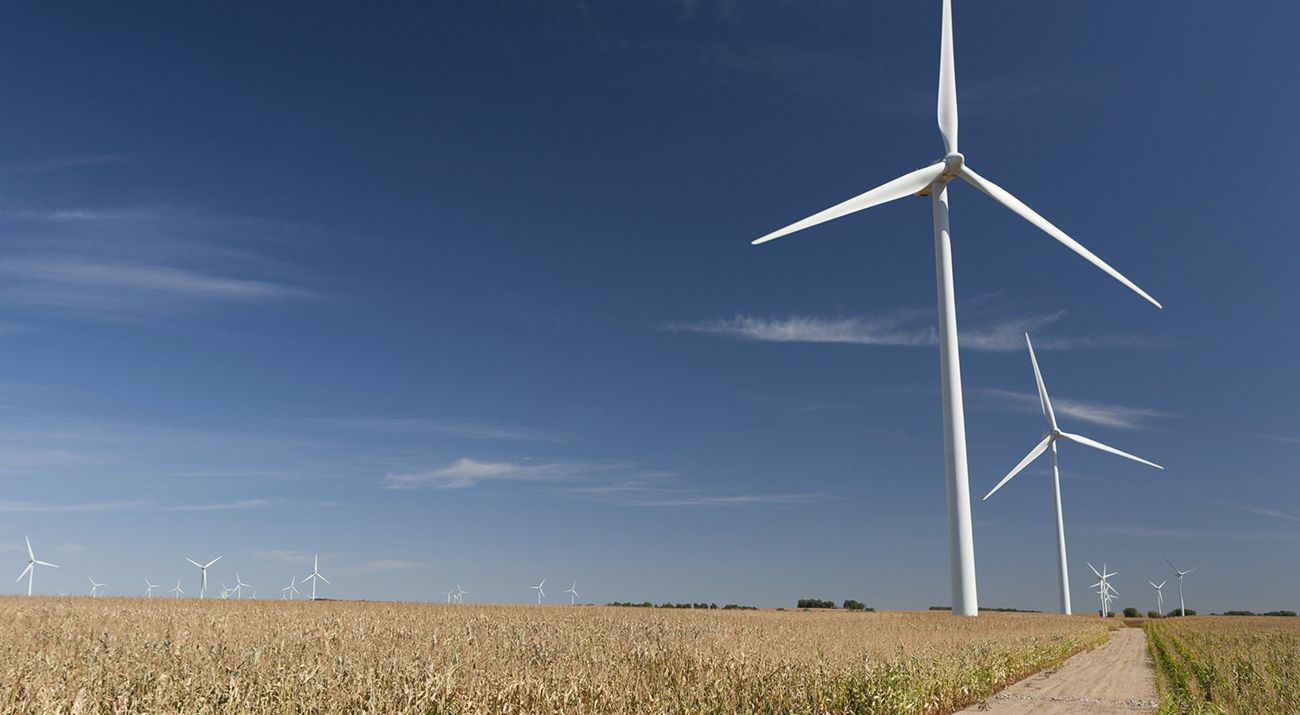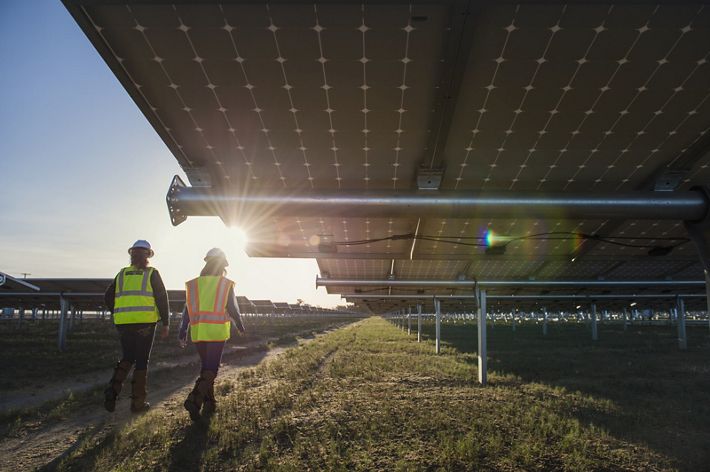
With record investments in clean energy and climate-smart food and forests beginning to flow, the United States is poised to reduce carbon pollution and usher in a prosperous, equitable, secure future.
Congress has taken great strides in addressing the threat of climate change by approving historic investments in clean energy, advancing nature-based solutions, and enhancing community resilience.
Federal support for new and available technologies will provide cleaner energy and improve energy efficiency for homes, businesses, factories, and vehicles. Recently approved policies and investments also leverage the carbon-storing powers of farms, forests, and natural lands.
These investments promise to increase community security and invigorate the economy, all while reducing climate pollution.
Restoring natural areas and improving forest health enhances climate resilience and reduces wildfire risk, while climate-smart forestry and agriculture practices improve the health and productivity of working lands.
By diversifying clean energy supplies, fostering innovation, and creating new jobs, these investments will increase the nation’s energy security and boost American competitiveness.
If the United States stays the course, independent research commissioned by The Nature Conservancy shows the full suite of recent climate and clean energy investments will:
- Support nearly 537,000 jobs annually for 10 years.
- Add $50.9 billion in value to the economy every year for 10 years – a return of $1.42 for every federal dollar invested.
Maintaining the pace of investments as envisioned, including strong support for American-made products and raw materials, will strengthen U.S. domestic manufacturing, reconfigure supply chains, and enhance U.S. competitiveness.
This transformation will take time, but the longer-term growth opportunities for businesses and communities are real.
And without effective implementation for these programs and additional actions, the United States will likely miss its 2030 goal of reducing emissions by 50-52% below 2005 levels.
Missing this target will make fighting the climate crisis harder, more expensive, and will undermine global cooperation.
With so much to lose and so much more to gain, now is the time to make the most of the recent policy advances and continue the momentum on climate action.
Policy Recommendations:
Protect the Integrity of Investments Already Approved. To maximize emissions reductions, the budget and timeframes approved in previous bills must be maintained. Predictable timing, scope, and scale for these programs are key to unlocking private-sector investments that will accelerate the deployment of available technologies, move new innovations closer to commercialization, and scale up reforestation, forest health, and climate-smart agricultural practices.
Ensure Timely, Effective Implementation of Programs. Providing adequate staffing and resources to federal agencies charged with implementing new and expanded programs will ensure the delivery of timely guidance and effective oversight. Agencies will need additional capacity to fill existing gaps and augment staff with different skills and experiences to direct programs into new areas. The recent supplemental funds should not replace regular appropriations that support critical science, technical assistance, and program activities expanding clean energy options and driving energy efficiency.
Improve Enabling Conditions to Effective Implementation. Addressing non-cost barriers to clean energy deployment, such as siting, permitting, workforce constraints, and supply chain bottlenecks, will be needed to fully realize the potential benefits over the next decade. For example, estimates indicate that electricity transmission systems need to expand by 60% by 2030, and may need to triple by 2050, to connect more communities to cheaper, cleaner power and meet growing electricity needs. However, over 80% of the potential emissions reductions promised from these investments in 2030 are lost if transmission expansion remains at its current pace (about 1% a year).
Support Local Planning and Community Engagement. Enhancing the ability of federal or state agencies and local communities to effectively plan for and shape the acceleration of clean energy infrastructure, projects, and supply chains will minimize potential risks and unintended consequences to both people and nature. Increased access to data, best practices for siting, and guidance on stakeholder engagement will help project developers better anticipate and respond to local community interests. Local communities also need assistance to participate effectively in stakeholder engagement processes.
Support New Policies for Sectors Not Yet Addressed. New policies and/or additional investments can encourage growth and innovation in economic sectors minimally impacted by recent bills. Additional focus on expanding clean energy options for whole sectors, such as buildings, or addressing specific segments, such as private forested land or long-haul shipping, could promote technologies and practices that would lower emissions, improve local community health and security, and provide other benefits.
Clean Energy Development: By the Numbers
Recently enacted policies could drive nearly $3.5 trillion in cumulative capital investment in new American energy supply infrastructure over the next decade (2023-2032).
In 2021, renewable energy provided 12% of total U.S. energy consumption.
Based on the promise of recent investment approved by Congress, renewable energy production in the United States is expected to more than triple by 2030, resulting in about 40% of the nation’s energy coming from sources such as wind and solar.
The use of carbon-capture technologies is expected to increase 13-fold by 2030. Annual investments in CO2 capture, transport, and storage are expected to reach more than $20 billion in annual investment by 2030.
Recent legislation provides early market deployment opportunities over the next decade that will drive innovation and scaling up for nascent clean technologies, such as clean hydrogen, zero-carbon liquid fuels, direct air capture, advanced nuclear, geothermal energy, and more. Similar incentives and government support contributed to costs for solar falling ~90% and costs for wind falling ~70% since 2009.
By 2030, recent policies and investments approved by Congress could reduce greenhouse gas emissions by 40% below 2005 levels and reduce the conventional pollutants from electric power generation by up to 82% compared to 2021.

A Natural Path for U.S. Climate Action
The United States could mitigate a fifth of its emissions through conservation and land management.



